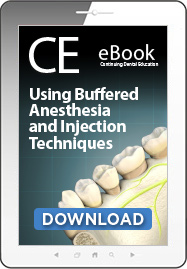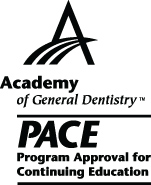CDEWorld > eBooks > Using Buffered Anesthesia and Injection Techniques to Reduce Pain and Improve Effectiveness


ADA CERP is a service of the American Dental Association to assist dental professionals in identifying quality providers of continuing dental education. ADA CERP does not approve or endorse individual courses or instructors, nor does it imply acceptance of credit house by boards of dentistry. Concerns or complaints about a CE provider may be directed to the provider or to ADA CERP at www.ada.org/cerp/

Approved PACE Program Provider. FAGD/MAGD credit. Approval does not imply acceptance by a state or provincial board of dentistry, or AGD endorsement. 1/1/2023 to 12/31/2028. ID # 209722.
eBook
Released: Monday, April 24, 2017
Expires: Thursday, April 30, 2020
Using Buffered Anesthesia and Injection Techniques to Reduce Pain and Improve Effectiveness
By Dan Davidian, DDS
Commercial Supporter: Anutra Medical
Good local anesthesia should work quickly and be 100% effective while causing no pain or toxicity. Although no anesthetic can provide the perfect combination of these attributes, a buffered anesthetic is beneficial when it comes to limiting toxicity because of the reduced volume needed and the substantial decrease in the time it takes to be effective when compared with more traditional means. Using buffered anesthesia allows dentists to save time, reduce patients’ pain, and increase revenue due to improved efficiency.
LEARNING OBJECTIVES:
-
Discuss the history, evolution, and purposes of local anesthetics.
-
Describe best practices for injections and administration of local anesthetics.
-
Explain how to utilize modern technology to administer local anesthetic for optimal care and practice efficiency.
About the Author
Daniel Davidian, DDS
Co-Founder, Anutra Medical, Morrisville, North Carolina; Private Practice, Raleigh, North Carolina


